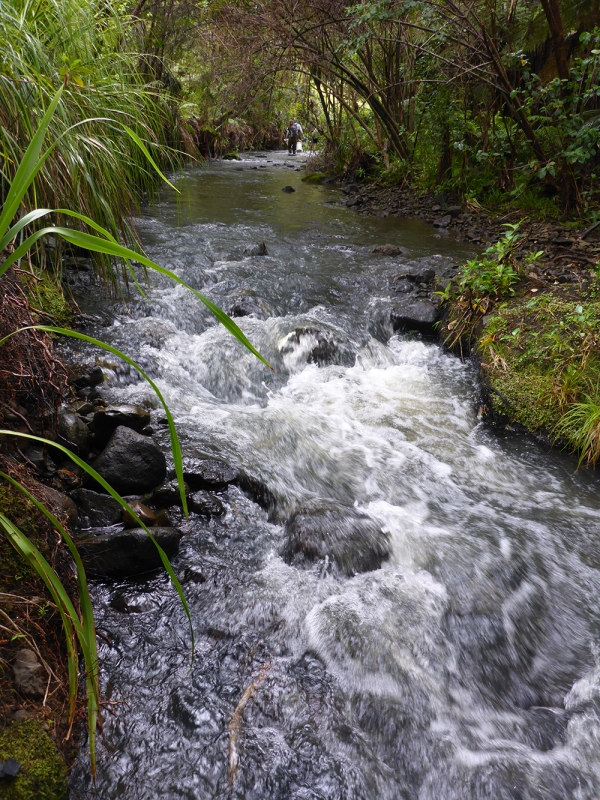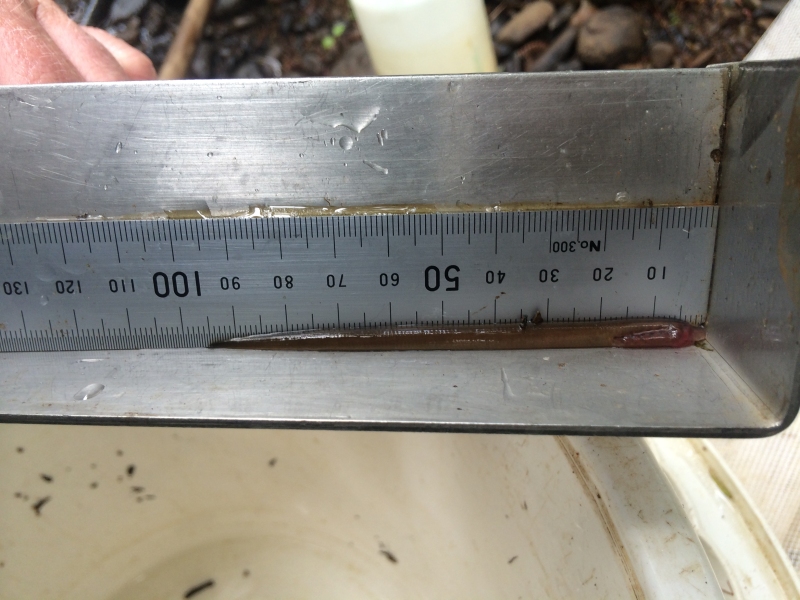NIWA and Auckland Council freshwater scientists using fish pheromone samplers have made a rare discovery in two Auckland streams.
Freshwater fish scientist Dr Cindy Baker and environmental chemist Dr Mike Stewart developed a pheromone sampler that detects the presence of lamprey (kanakana/piharau) in freshwater, an important taonga species for Māori but now believed to be in decline.
Adult lamprey migrate from the ocean to freshwater streams to spawn and use pheromones to locate suitable spawning sites. Lamprey are thought to be extremely rare in the Auckland area, with only one previous record throughout the region. The samplers, which absorb pheromones going past in the water column, were placed in 12 streams across Auckland in a project commissioned by Auckland Council, and supported with additional funding from the Ministry for Business, Innovation & Employment. Dr Baker said the lamprey could be anywhere in the stream system when they secrete the pheromones that are then absorbed by the samplers. “Once analysed, the samplers indicate whether there are lamprey in the catchment and, to an extent, whether they are present in high or low densities.” The samplers placed in the Piha and Glen Esk streams in the Waitakere Ranges were the only two streams to return positive results. Electric fishing and a search for lamprey egg nests was then carried out along an area of about 1km in one stream and 500m in the other and the lamprey were discovered. “We found two juvenile lamprey in the Piha Stream and three in Glen Esk so they’re not present in huge densities but they are definitely there. We’d anticipate that there may be higher numbers of lamprey in the stream’s lower reaches. However, the deeper waters are difficult to survey so we specifically targeted higher stream elevations.” Dr Baker said these streams drain the Waitakere Ranges and are a particularly pristine part of Auckland. “It is predominantly native bush and an area of high conservation value – this discovery only enhances the value of the streams in this area.” In addition to discovering lamprey, Dr Baker and her team also found shortjaw kōkopu, kōaro and torrentfish. None of these species have previously been documented in Glen Esk Stream. “There are only three areas in Auckland where shortjaw kōkopu have been found before. In Glen Esk Stream, we captured three within 100 metres. Kōaro are also rare in Auckland, which points towards the Glen Esk Stream as being one of Auckland Council’s most valuable streams from a native biodiversity perspective.” Auckland Council senior biodiversity advisor Matt Bloxham said finding the lamprey was extremely exciting. “The interesting thing is that the pheromone signals were weak for Piha Stream and that was validated by us only finding a few juveniles. It certainly gives us something to work on. And without such an incredible methodology we would never have got this far and might never have found them,” he said. As a result of the work, Auckland Council was now considering developing a control programme to manage predator numbers in the area. “A number of species of vermin have the potential to predate aquatic species particularly the kokopu eggs which are laid beside the stream.” Dr Baker said the next step with the pheromone project was to better understand the concentrations of lamprey and determine whether there is a good correlation between what the pheromone samplers were indicating and the actual numbers of lamprey in the stream. They would also like to extend the samplers to include other pheromones. “At the moment we focus on petromyzonol sulfate but there are other pheromones that we know of that could also be examined. Dr Baker will be presenting earlier research on the spawning sites of lamprey at the joint New Zealand Hydrological and Freshwater Sciences Societies annual conference in Blenheim later this month. Last year Dr Baker led a team that discovered the first nesting sites of lamprey in the Southern Hemisphere. They were found on Banks Peninsula.



